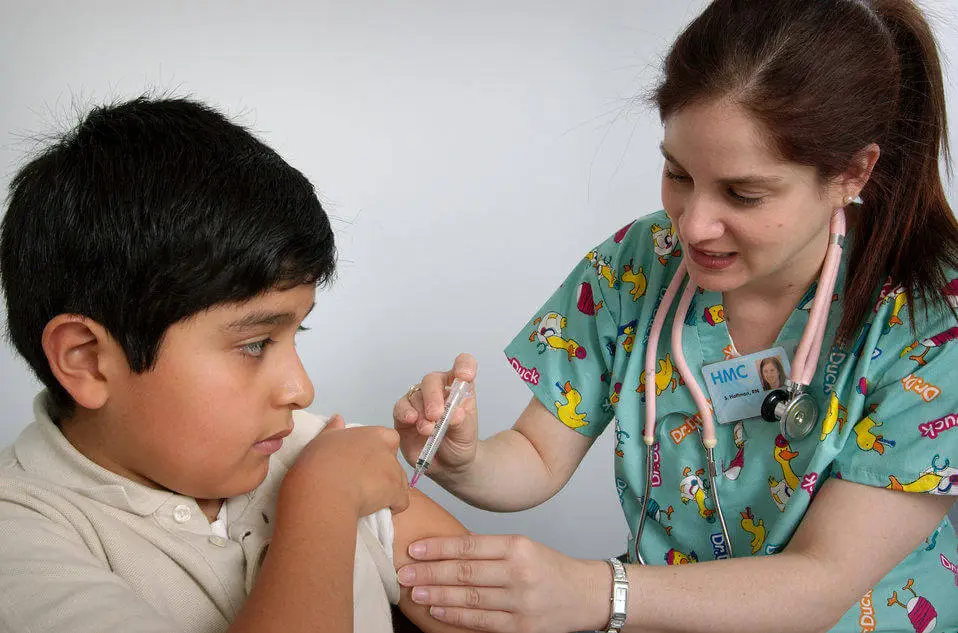What Information Is Covered in a Vaccination Record?
Most of the vaccination or immunization records cover the following information:
- Type of Vaccination: This will state the specific type of vaccination. For example, MMR (given for measles, mumps, and rubella) or MMRV (given for measles, mumps, rubella, and varicella). In this column all the abbreviations of the vaccines will be written.
- Given Date: The correct date with day, month, and year on which the vaccine was given should be mentioned. This information is needed to calculate the next dose of some vaccines.
- Route and Site: This denotes the route of vaccine or how the vaccine was administered. Vaccines can be oral, intranasal, or intramuscular. If the vaccine was injected then the location, such as a left-arm or right thigh, etc. will also be mentioned.
- Lot Number: Every vaccine has a lot number of the manufacturer. It is generally recorded to immediately address any issues with the vaccine.
- Information Statement of Vaccine: This information denotes the date of manufacture of the vaccine. It also contains the date on which it was administered.
- Name of the Vaccinator: Name and signature of the person who has administered the vaccine. This person is generally a nurse or a medical attendant.
Some information in the record may be self-explanatory. However, most is written down in codes. Read on to know some commonly-used abbreviations in your child’s vaccination record.
These are some common terms you’ll find in the medical records:
- Acellular Vaccine: As opposed to complete cells, an acellular vaccine is a vaccine that contains only a partial cellular material.
- Active Immunity: Active immunity is one of the common terms, that refers to the production of antibodies in the immune system to fight a specific disease. It can be acquired in two ways. Firstly through a vaccine and secondly by contracting the disease. Active immunity is generally considered permanent. This means the individual is protected from a specific disease for the entire duration of his/her life.
- Inactivated Vaccines: Vaccines that are produced with the help of the inactivated version of the infection producing microorganism.
- Live Attenuated Vaccine: These types of vaccines are created using live viruses with reduced/weakened virbulence. They are believed to provide immunity for a longer period. But it can be unsafe if you have weakened immunity. Some of the live attenuated vaccines are rubella, measles, mumps, varicella, rotavirus, yellow fever, smallpox, and also some formulations of influenza, shingles, and typhoid vaccine.
- Conjugate Vaccine: This type of vaccine evokes the immune response in the body against a specific microorganism. Its done by using a part of the infectious agent (strong antigen) and a part of the weakened agent (weak antigen).
- Toxoid Vaccine: Instead of the microorganism itself, this type of vaccine uses a part of the harmful toxin that’s produced from the microorganism. It helps build immunity against the harmful toxin.
- Bivalent Vaccine: A bivalent vaccine is designed to target two strains of a microorganism.
- Adverse Event: An adverse event refers to a negative outcome after medical treatment. Generally, adverse events are considered more severe than common side effects. For instance, an allergy to immunization can be considered as an adverse event.
- Side Effects: A side effect can be termed as a reaction that may occur after exposure to medical treatment. These could be vaccination, surgery, or medication. The most common side effects include redness, soreness, pain at the site of injection, or a feeling of run down.
- Herd Immunity: This term describes a situation wherein the disease is less prevalent. Also, is very less likely to spread when more number of people are vaccinated for it. In general, people with weak immunity are more likely to get infected with infectious diseases even after being immunized. These include such as those who are being treated for cancer, premature babies, or those with HIV infection.
- Combination Vaccine: This is referred to a vaccine that can protect against two or more diseases. Some combination vaccines can also protect against diseases caused by different strains or the same organism.
- Booster Shots: Booster shots are those additional dosages of vaccine that are administered periodically. It is done to boost the immune system of the individual. For instance, the Td vaccine is recommended for adults every ten years for tetanus and diphtheria.
- Antibody: Antibody refers to the protein formed in the blood in response to foreign particles. For eg. bacteria and viruses that invade our body. Antibodies protect against diseases by binding to these organisms and destroying them.
- Contraindication: A rare condition in which the patient is likely to result in a life-threatening situation if a vaccine were given.
Gathering as much information regarding the common terms used for various vaccinations. Also, their history can be enlightening and helpful. Immunization and vaccinations are considered very safe. They also protect us against a number of deadly diseases and dangerous epidemics.
The next time you happen to come across immunization vaccination common terms, we’re sure you’ll know most of them. If not, refer to this article again to know what has been recorded about your little one’s immunization. The information is quite easy to understand once you know the basics.
To know more, make an enquiry about vaccinations or book an appointment with our pediatrics experts!

